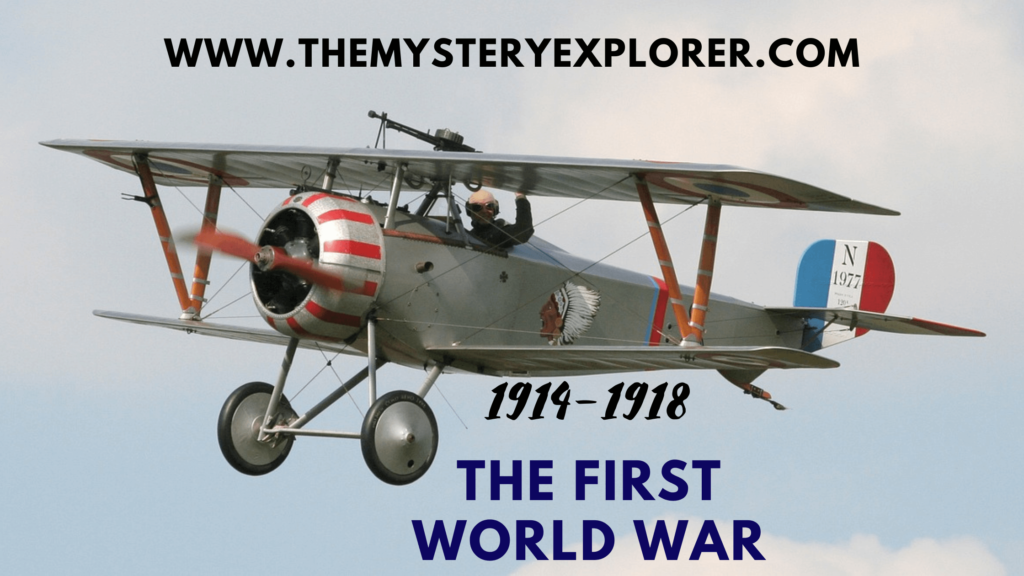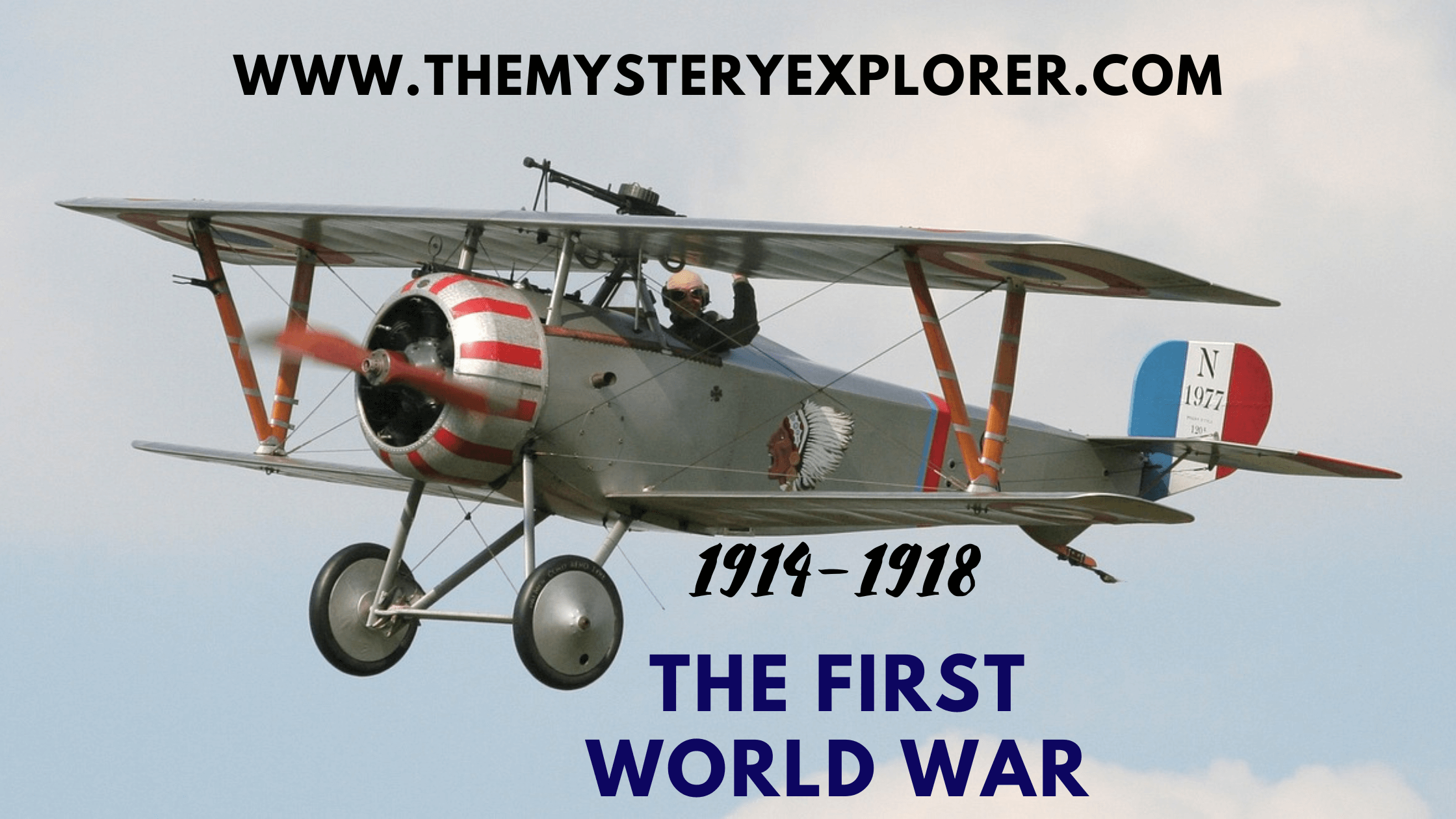The First World War, also known as the Great War, was a global conflict that lasted from 1914 to 1918. It involved many of the world’s major powers, divided into two opposing alliances: the Allies and the Central Powers. The origins of the war can be traced back to a complex web of political tensions, rivalries, and alliances among European powers.
The First World War : 1914 to 1918

The conflict’s heart was a series of long-standing disputes and territorial ambitions. The major powers of Europe had been engaging in an arms race for many years, with each nation striving to build up its military strength. Nationalism was also on the rise, leading to an increased desire for independence and self-determination among various ethnic groups.
The spark that ignited the war came in June 1914 when Archduke Franz Ferdinand, the heir to the Austro-Hungarian throne, was assassinated by a Serbian nationalist in Sarajevo. Austria-Hungary saw this as an opportunity to crush Serbian nationalism and issued an ultimatum to Serbia, which was rejected. This triggered a chain reaction of events, as alliances were invoked and declarations of war were made.
Austria-Hungary, supported by Germany, declared war on Serbia in July 1914. Russia, Serbia’s ally, mobilized its forces in response. Germany, fearing a two-front war, launched an invasion of Belgium and France as part of the Schlieffen Plan. This violated Belgium’s neutrality and brought Britain, which had a treaty to protect Belgian neutrality, into the war.
The early stages of the war saw rapid and massive mobilizations of armies. Both sides expected a quick victory, but as the war progressed, it became clear that it would be a long and brutal conflict. The trenches soon became the dominant feature of the Western Front, stretching from the English Channel to the Swiss border. The war on the Eastern Front, between Germany and Austria-Hungary and Russia, was characterized by mobility and large-scale battles.
The war was fought with unprecedented levels of industrialized warfare. Artillery bombardments, machine guns, and poison gas were used on a massive scale. Tanks and aircraft were introduced, changing the nature of warfare. The war also witnessed the first large-scale use of submarines, which targeted merchant ships and played a significant role in the naval blockade of Germany.
The major battles of the war are etched in history: the Battle of the Somme, the Battle of Verdun, and the Battle of Passchendaele, among others. These battles resulted in staggering casualties, with millions of lives lost on both sides. Soldiers faced unimaginable hardships, living in the squalor and constant danger of the trenches. Many soldiers experienced the horrors of war firsthand, suffering from shell shock, disease, and physical injuries.
The First World War also had significant consequences beyond the battlefield. The home fronts of participating countries were deeply affected, with economies strained, food shortages, and social upheaval. Women took on new roles in society, entering the workforce to replace men serving in the military. The war also brought about political changes, such as the Russian Revolution in 1917, which led to the establishment of the Soviet Union.
As the war dragged on, public opinion turned against the conflict. The human cost became increasingly apparent, and people began to question the purpose and justification of the war. Pacifist movements emerged, calling for an end to the fighting and a negotiated peace. However, it wasn’t until 1917 that the United States entered the war, tipping the balance in favor of the Allies.
In 1918, the Allies launched a series of offensives that pushed back the Central Powers. Germany’s military position became untenable, and its leadership sought an armistice. On November 11, 1918, an armistice was signed, effectively ending the fighting. The subsequent Treaty of Versailles, signed in 1919, imposed harsh terms on Germany, leading to resentment and laying the groundwork for future conflicts.
The First World War had a profound and far-reaching impact on the world. It led to the collapse of empires, redrew national borders, and reshaped the geopolitical landscape of Europe and the Middle East. The war marked the end of the old world order and set the stage for the turbulent years that followed.
The First World War also left a lasting legacy in terms of societal changes and technological advancements. It shattered the notion of war as a glorious endeavor and revealed its devastating human cost. The war’s immense casualties and destruction fueled a collective desire for peace and shaped the development of international institutions such as the League of Nations, a precursor to the United Nations.
In conclusion, the First World War was a cataclysmic event that engulfed the world in conflict. It was a war of unprecedented scale and brutality, with profound consequences for the nations involved and the course of history. The war serves as a stark reminder of the dangers of nationalism, militarism, and unresolved international tensions. Its lessons continue to resonate today as we strive to prevent future conflicts and promote global peace and understanding.
To read more in Hindi Click Here
To read more in English Click Here
